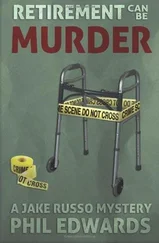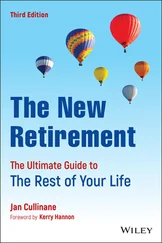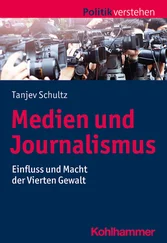In court, US Airways’ team of lawyers and consultants presented reams of actuarial calculations and colorful charts and tables demonstrating the pension plan’s deficit and the perils of preserving it. The frustrated pilots, with their lone actuary, couldn’t put on as good a show. The bankruptcy judge relied on US Airways’ figures and allowed the termination to proceed. In his decision, Judge Stephen Mitchell said that the pilots were less credible, because they had “based their calculation on rules of thumb and rough estimates while [US Airways’] actuary based his on the actual computer model used for administration of the plan.”
Bankruptcy raids like this are made possible by a loophole in the bankruptcy code, which coincidentally was enacted at about the same time as federal pension law, in the late 1970s. The law says that when companies go into Chapter 11, banks and creditors take priority over employees and retirees, who have to get in line with the other unsecured creditors, like the suppliers of peanuts and cocktail napkins.
Delta Air Lines filed for bankruptcy in 2005 and terminated the pension plan covering 5,500 pilots. Denis Waldron, a retired pilot from Waleska, Georgia, had been receiving a monthly pension of $1,939 until the pension plan was taken over by the Pension Benefit Guaranty Corp. But the PBGC guarantees only a certain amount. The maximum in 2011: $54,000 a year ($4,500 a month) for retirees who begin taking their pensions at sixty-five. The maximum is lower at younger ages, and for those with spouses as beneficiaries. The PBGC doesn’t guarantee early-retirement subsides, which are enhancements that make pensions more valuable. The payout is further limited for the pilots because they are required to retire at age sixty. After myriad calculations, including various look-back penalties, Waldron’s pension fell to just $95 a month.
Pilots were slammed in another way as well: Their supplemental pensions weren’t guaranteed at all. Don Tibbs, of Gainesville, Georgia, had put in more than thirty years as a pilot and was receiving $7,000 a month from his supplemental pilots’ plan and $1,197 a month from the regular pension plan. The supplemental plan was canceled when the airline filed for bankruptcy, and a year later, when Delta turned the pilots’ pension plan over to the PBGC, Tibbs lost that pension, too, thanks to quirks in the insurer’s rules.
Though creditors, shareholders, and executives all profited, Tibbs now has only his Social Security and a small military reserve income. “They were able to use the bankruptcy court to walk away from their obligation,” Tibbs recalled bitterly. “What happened to me and a lot of my friends was and is criminal.”
United Airlines was next in line on the bankruptcy tarmac, and it spread the pain even more widely. In 2006 it terminated all its pension plans—for flight attendants, mechanics, and pilots.
Today the giant surpluses are gone: sold, traded, siphoned, diverted to creditors, used to finance executive pay, parachutes, and pensions. But you’d think the employers had nothing to do with it. Companies blame investment losses for their plight, as well as their aging workforces, union contracts, regulation, and global competition. But their funding problems were largely self-inflicted. Had they not siphoned off the assets, they would have had a cushion that could have withstood even the market crash that troughed in March 2009. Nonetheless, employers continue to lobby for more liberal rules that would enable them to shift hundreds of millions of dollars of additional executive obligations into the pension plans and to withdraw more of the assets to pay other benefits. Meanwhile, their solution when funds run low remains the same: Cut pensions.
Chapter 2
HEIST
Replenishing Pension Assets by Cutting Benefits
IN 1997,Cigna executives held a number of meetings to discuss their pension problem. At the time, the plan was overfunded, but executives weren’t satisfied and suggested cutting the pensions of 27,000 employees in an effort to boost the earnings they could report on their bottom line. The only hitch? How to cut people’s pensions—especially those for long-tenured employees over forty—by 30 percent or more, without anyone noticing?
Cigna was just the latest of hundreds of large companies, including Boeing, Xerox, Georgia-Pacific, and Polaroid, that had already gone through this charade in the 1990s. These companies had something in common: They all had large aging workforces—with tens of thousands of employees who had been on the job for twenty to thirty years. These workers were entering their peak earning years, and with traditional pensions that are calculated by multiplying years of service by one’s annual salary, their pensions were about to spike. With the leverage of traditional pension formulas, as much as half an employee’s pension could be earned in his final five years. In short, millions of workers were about to step onto the pension escalator.
Financially, that wasn’t a problem. Companies, including Cigna, had set aside plenty of money to pay their pensions, so having a large cohort of aging workers didn’t put the companies in peril. The companies had anticipated the growth rates of people’s pensions, and the estimated life spans of their workers, and had funded their pensions accordingly. So it didn’t matter that the pensions would quickly grow. The companies were prepared.
The problem, from the employers’ perspective, was that it would be a shame to pay out all that money in pensions when there were so many other useful ways it could be put to use for the benefit of the companies themselves.
Laying people off was one way to keep pension money in the plan. When people leave, their pensions stop growing, and if this happens just when employees’ pensions are poised to spike, all the better. In the 1990s, companies purged hundreds of thousands of middle-aged workers from the payrolls at telephone companies, aerospace and defense contractors, manufacturers, pharmaceutical companies, and other industries, reducing future pension outflows by billions of dollars.
Employers couldn’t lay off every middle-aged worker, of course, but there were other ways to slow the pension growth of those who remained. They could cut pensions, but there were certain constraints. Pension law prohibits employers from taking away pensions being paid out to retirees, and employers can’t rescind benefits its employees have locked in up to that point. But they can stop the growth, by freezing the plans, or slow it, by switching to a less generous formula.
That was the route Cigna took. The company estimated that the move would cut benefits of older workers by 40 percent or more, which meant that as much as $80 million that had been earmarked for their pensions would remain in the plan.
The challenge was how to cut pensions without provoking an employee uprising. Pushing people off the pension escalator just when they’re about to lock in the fruits of their long tenure would be like telling a traveler that his nearly one million frequent flier miles were being rescinded—they weren’t going to like it.
Cigna’s solution to this communications challenge? Don’t tell employees. In September 1997, consulting firm Mercer signed a $200,000 consulting contract to prepare the written communication to Cigna employees, describing the changes without disclosing the negative effects. One of these was a benefits newsletter Cigna sent employees in November 1997, entitled “Introducing Your New Retirement Program.” On the front, “Message from CEO Bill Taylor” declared: “I am pleased to announce that on January 1, 1998, CIGNA will significantly enhance its retirement program…. These enhancements will make our retirement program highly competitive.”
Читать дальше












